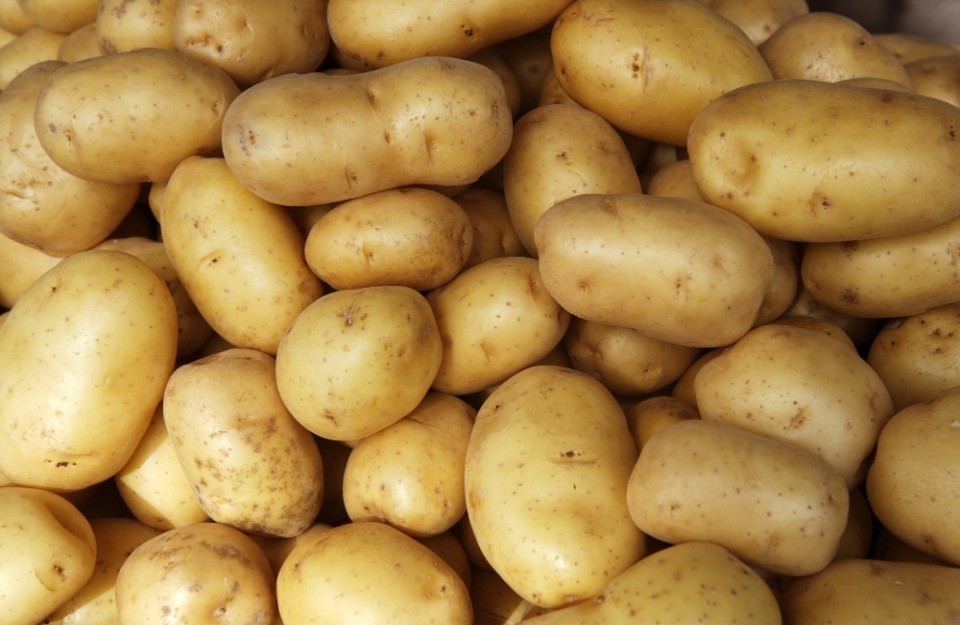
The recent surge in potato prices in Uttar Pradesh has raised concerns among consumers. In this article, we will explore the reasons behind this price hike, the varieties of potatoes that have seen significant increases, and the potential impacts of this rise.
Different varieties of potatoes are sold in various markets across Uttar Pradesh. The table below shows the price changes between June 19 and June 27:
| Name of Mandi | Variety | Price on June 19 | Price on June 27 | Price Increase |
| Bahraich | Desi | ₹ 2,140 | ₹ 2,255 | ₹ 115 |
| Ballia | Potato | ₹ 1,920 | ₹ 2,040 | ₹ 120 |
| Barabanki | Desi | ₹ 1,920 | ₹ 2,040 | ₹ 120 |
| Bareilly | Potato | ₹ 1,765 | ₹ 1,875 | ₹ 110 |
| Faizabad | Desi | ₹ 1,950 | ₹ 1,970 | ₹ 20 |
| Farukhabad | Local | ₹ 1,730 | ₹ 1,900 | ₹ 170 |
| Ghaziabad | Desi | ₹ 2,050 | ₹ 2,200 | ₹ 150 |
| Jaunpur | Badshah | ₹ 1,900 | ₹ 2,100 | ₹ 200 |
| Lucknow | Desi | ₹ 1,960 | ₹ 2,030 | ₹ 70 |
| Mainpuri | Local | ₹ 1,750 | ₹ 1,830 | ₹ 80 |
| Muradabad | Desi | ₹ 1,850 | ₹ 1,920 | ₹ 70 |
| Pilibhit | Desi | ₹ 1,770 | ₹ 1,900 | ₹ 130 |
| Varanasi | Badshah | ₹ 1,980 | ₹ 2,100 | ₹ 120 |
| Buland Shahr | F.A.Q. | ₹ 2,015 | ₹ 2,150 | ₹ 135 |
| Etah | Desi | ₹ 1,770 | ₹ 1,900 | ₹ 130 |
| Sultanpur | Chandermukhi | ₹ 1,850 | ₹ 2,050 | ₹ 200 |
| Pratapgarh | Desi | ₹ 1,890 | ₹ 2,060 | ₹ 170 |
| Devariya | Potato | ₹ 2,100 | ₹ 2,200 | ₹ 100 |
| Basti | Desi | ₹ 2,100 | ₹ 2,230 | ₹ 130 |
| Azamgarh | Desi | ₹ 1,900 | ₹ 2,050 | ₹ 150 |
| Mirzapur | Desi | ₹ 1,900 | ₹ 2,015 | ₹ 115 |
| Jhansi | Desi | ₹ 2,110 | ₹ 2,290 | ₹ 180 |
| Muzzafarnagar | Desi | ₹ 2,050 | ₹ 2,200 | ₹ 150 |
| Firozabad | Potato | ₹ 1,775 | ₹ 1,825 | ₹ 50 |
| Bijnaur | Desi | ₹ 1,850 | ₹ 1,910 | ₹ 60 |
| Kasganj | Desi | ₹ 1,775 | ₹ 1,950 | ₹ 175 |
Reasons for the Increase in Potato Prices:
Impact on Farmers: The rise in potato prices has a significant impact on farmers. Higher prices can mean better returns for their produce, providing them with a chance to earn more.
Impact on Consumers: For consumers, the increase in potato prices is a matter of concern. It affects household budgets, particularly for lower-income groups who find it challenging to cope with rising food costs.